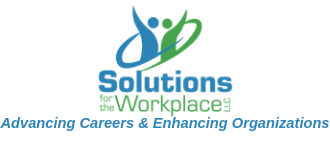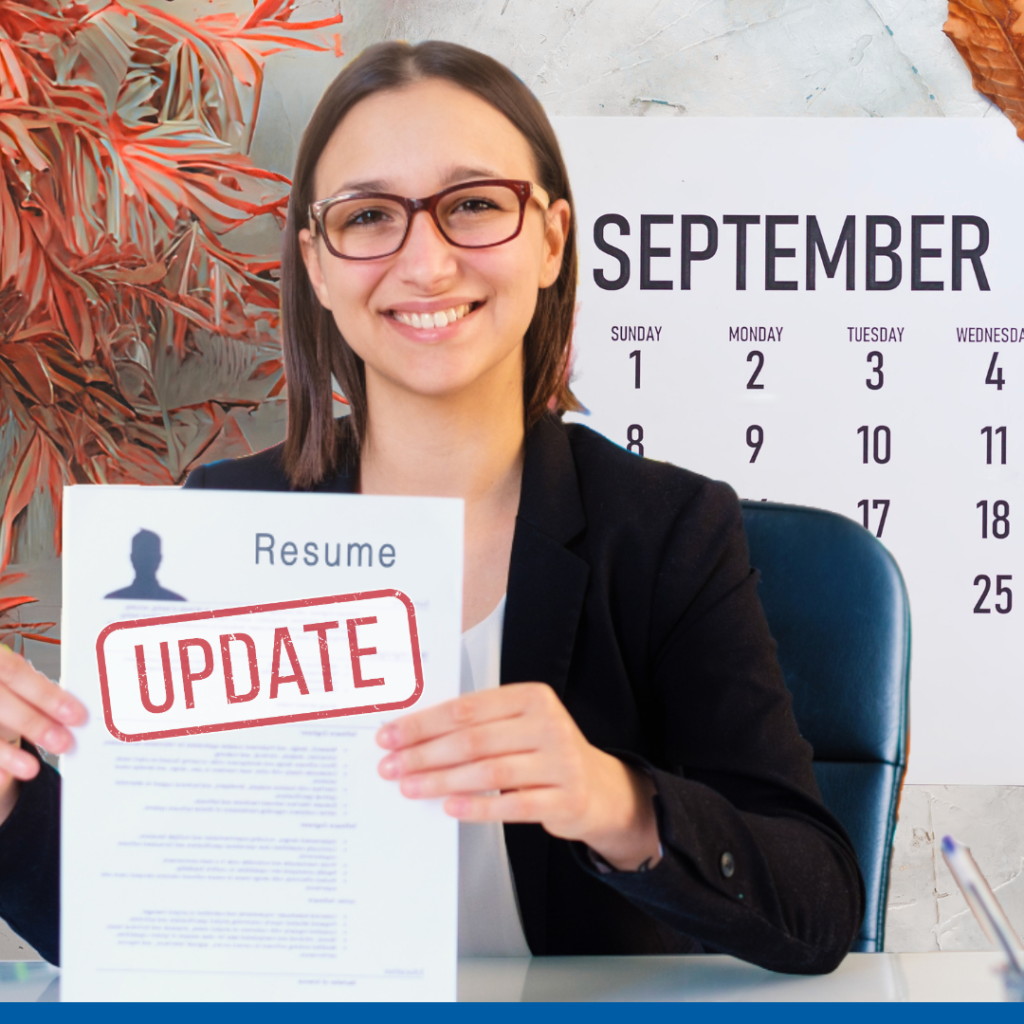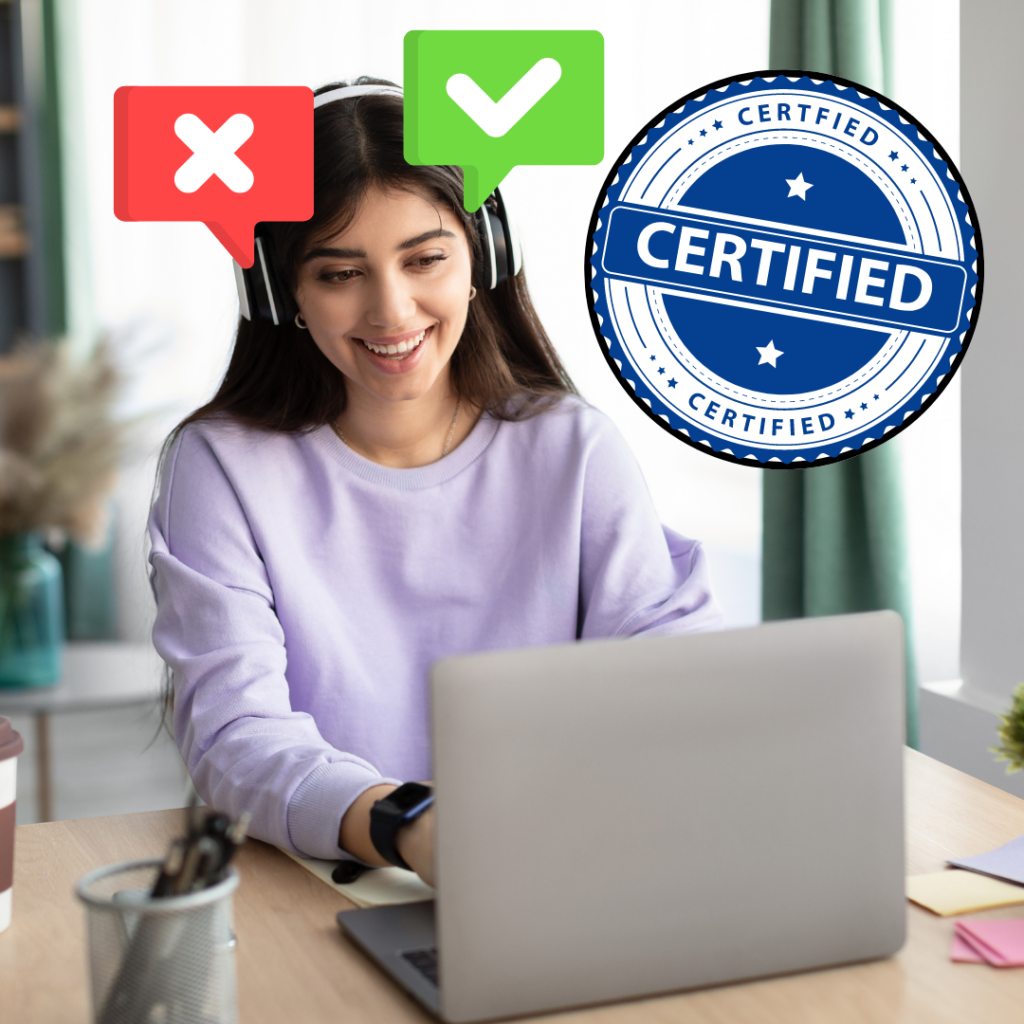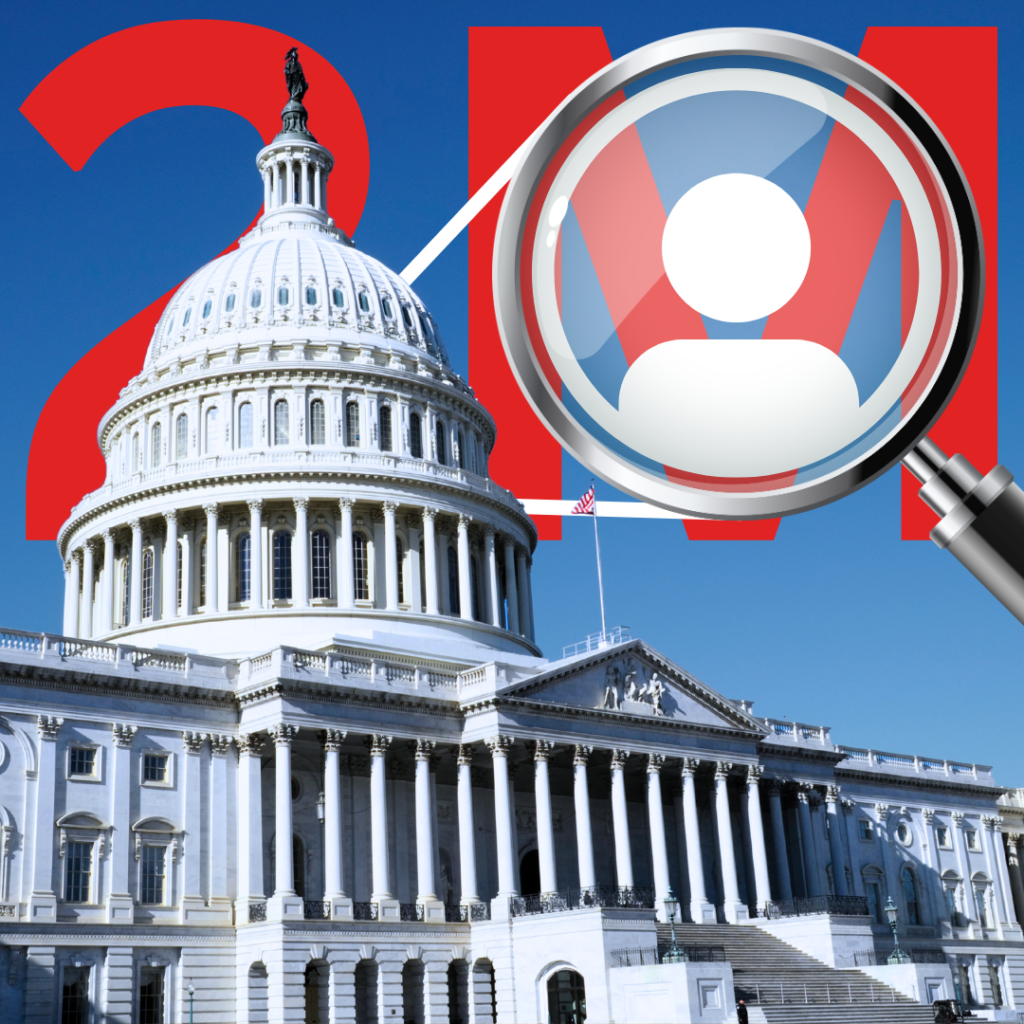September means that school is starting, along with the fall season. September is also Update Your Resume Month!
Since most careers require a resume in order to gain employment, it’s important that job seekers take a proactive approach in order to be ready for any and all opportunities that come their way. Too often, people try to write their resume at the last minute, which is the worst time to prepare a document that needs to be perfect. A well-crafted resume takes time and research, and Update Your Resume Month is a perfect reminder to be prepared for new opportunities
To update your resume, consider the following:
- What have you accomplished for your employer? Have you improved efficiency (and if so, by how much?) Complete more than xx number of transactions in a specified timeframe? Have you saved your organization money (and if so, how much)? Etc. If you have written an annual self-assessment or accomplishment report as part of your annual performance evaluation, review that to help you get started.
- Have you completed a new degree or certification? Or learned new skills?
- Is your current resume focused on the past 10 years (I promise no one cares what you did in 1980).
- Have you had a new job since you last updated your resume?
- Is your resume keyword-rich for the position(s) you’d like to target?
- Did you check that the dates and titles on your resume are consistent with what you have on LinkedIn?
- Are acronyms spelled out?
- Is your resume visually appealing? Readable (font is not too small and neither are your margins)?
- Do you have both a federal and private sector resume? You never know what opportunities will become available and it’s best to be prepared!
September is the perfect time to think back on the past year of your career and achievements—and get ready for the future. This will you be prepared to maximize your opportunities and take the next step in your career.
To celebrate this time of year, don’t miss out on the opportunity to invest in your professional growth and secure your path to federal job success by using code BACKTOSCHOOL for 10% off our self-paced online training courses by September 30, 2024!






